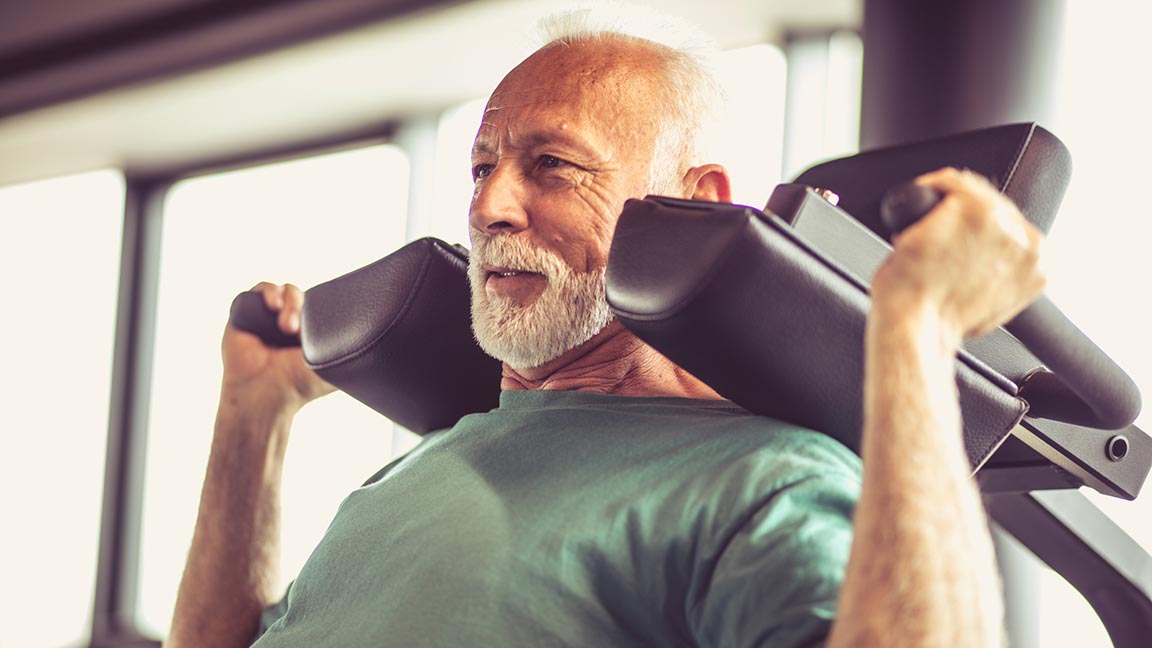It’s never too late to start strength training using free weights or resistance bands, which can help combat the natural aging process and help us live better, more active lives.
Adding strength training to an exercise program that also includes aerobics can slow down or even reverse age-related muscle loss and weakness, says Michelle Dowd, clinical services director at Tidelands Health Pawleys Family YMCA.
“Strength training is especially important for older adults, who are at greater risk for falls and fractures because of muscle weakness and reduced bone density,’’ Dowd adds. “Strength training can help you maintain or increase muscle mass and reduce your risk of osteoporosis by stressing the bones and increasing bone density.”
Want to start strength training? Here’s what you need to know:
Before starting a strength-training program, check in with your primary care provider to ensure you’ve got the green light to begin. You and your doctor can discuss any health issues or limitations that might dictate the best approach to adding strength training.
If you’re new to strength training, the best place to start is using your own body weight. Sit-to-stand and squatting are examples of strength training exercises. Adding resistance bands, then free weights will add a challenge to your workout.
At the YMCA of Coastal Carolina, you can benefit from classes and personal trainers to help you begin or advance your exercise program. Training is tailored to your unique needs and fitness level.
Tidelands Health is the exclusive health system partner of the YMCA of Coastal Carolina. Together, the two organizations are providing the community with access to a broad variety of services and programs to improve health and wellness.
“The biggest barrier for many people is getting through the doors of a gym,” Dowd says. “If you want to start out at home, you’ll build confidence and self-esteem. At a gym, you’ll also get that social connection. You’re able to talk to people and that can have a positive impact on your mental health.”
During a workout, the goal is to target all major muscle groups in the upper, lower and core areas of the body twice a week with at least one day of rest in between to allow the body to recover. For older adults, 10 to 15 repetitions per set performing the basics is a good target to aim for.
“You need to fatigue your muscles to build mass,” Dowd explains. “You want that last repetition to be difficult to complete but not painful. Starting out deconditioned, you’ll hit those fatigue points a little sooner.”
For older adults, workouts need not be too rigorous to be beneficial.
“You want to make sure your form is correct, but once you’re there and you’ve fatigued the muscle, you don’t have to do anymore,” she adds. “One set will be enough for seniors. To maintain where you’re at, one set is going to be perfect.”
Basic exercises include a push, a pull, a squat and core strengthening to hit all the major muscle groups.
A pushup is an example of a push; a row would be a pull; a squat works the lower body; a leg extension targets the quadriceps and leg curls target the hamstrings. Planks, for example, target the core. No matter what exercise you perform, knowing how to control your breathing also engages the core. Exhaling when pulling or pushing weight activates the core and protects the back from injury. Keeping the abdominal muscles tight when exercising also engages the core.
Aerobic exercise keeps the cardiovascular system in check by strengthening the heart and lungs, but that’s only part of a thorough exercise program. Strength training lowers the risk of chronic disease from disability and inactivity and can help older adults stay active and independent, Dowd says.
Not only does strength training build muscle mass, but it can help burn excess fat, lower blood pressure, decrease the risk for developing diseases like diabetes and reduce chronic pain caused from conditions like arthritis.
“Not moving is detrimental to someone suffering from arthritis because as you continue to weaken, your pain will increase, and it will make activities of daily living more and more unbearable,” Dowd explains.
Getting past the point of discomfort during an exercise routine could start with simple range of motion and stretching exercises, adding in a bit of cardio and finally including strength training to increase muscle mass, which will eliminate some of the stress surrounding those painful joints, Dowd says.
No matter where you are in your fitness journey, the important thing to remember is that movement and building strength will go a long way toward preventing disease and disability as you age.
“It’s about getting up and moving and not sitting down and staying sedentary,” Dowd says. “Everything you do can add up to better health and a better quality of life.”
